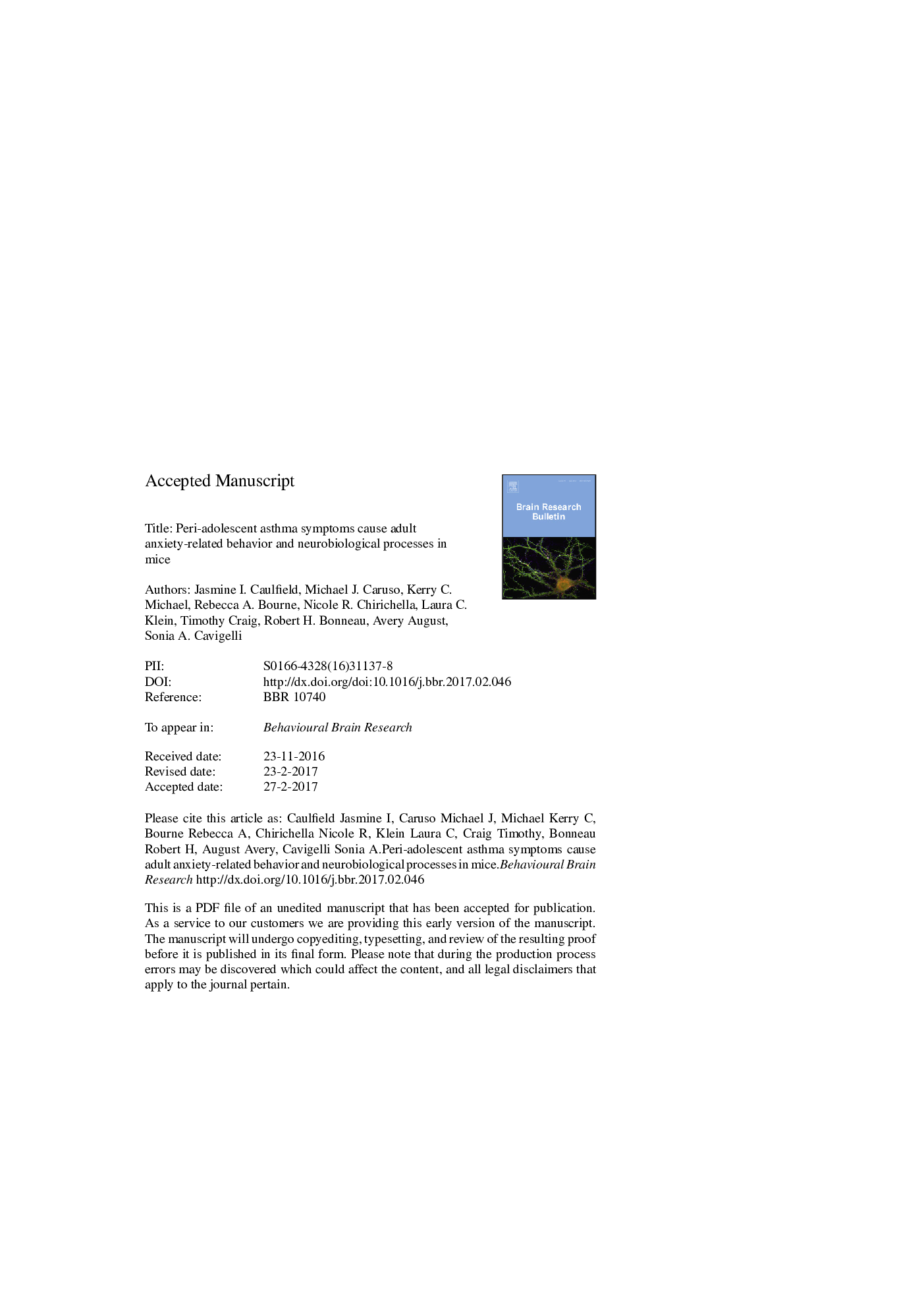| Article ID | Journal | Published Year | Pages | File Type |
|---|---|---|---|---|
| 5735559 | Behavioural Brain Research | 2017 | 50 Pages |
Abstract
Human and animal studies have shown that physical challenges and stressors during adolescence can have significant influences on behavioral and neurobiological development associated with internalizing disorders such as anxiety and depression. Given the prevalence of asthma during adolescence and increased rates of internalizing disorders in humans with asthma, we used a mouse model to test if and which symptoms of adolescent allergic asthma (airway inflammation or labored breathing) cause adult anxiety- and depression-related behavior and brain function. To mimic symptoms of allergic asthma in young BALB/cJ mice (postnatal days [P] 7-57; N = 98), we induced lung inflammation with repeated intranasal administration of house dust mite extract (most common aeroallergen for humans) and bronchoconstriction with aerosolized methacholine (non-selective muscarinic receptor agonist). Three experimental groups, in addition to a control group, included: (1) “Airway inflammation only”, allergen exposure 3 times/week, (2) “Labored breathing only”, methacholine exposure once/week, and (3) “Airway inflammation + Labored breathing”, allergen and methacholine exposure. Compared to controls, mice that experienced methacholine-induced labored breathing during adolescence displayed a â¼20% decrease in time on open arms of the elevated plus maze in early adulthood (P60), a â¼30% decrease in brainstem serotonin transporter (SERT) mRNA expression and a â¼50% increase in hippocampal serotonin receptor 1a (5Htr1a) and corticotropin releasing hormone receptor 1 (Crhr1) expression in adulthood (P75). This is the first evidence that experimentally-induced clinical symptoms of adolescent asthma alter adult anxiety-related behavior and brain function several weeks after completion of asthma manipulations.
Keywords
IL-4SPTMCHSPSSqRT-PCRUSVserotonin receptor 1ATRICrhr1EPMIL-5HDMTh2IL-13CRHPFCIL-6T helper 2TNFαPBSperiodic acid-Schiff stainH&Esucrose preference testcycle thresholdAsthmaultrasonic vocalizationAnxietyinterleukin 13Interleukin 4Interleukin 5interleukin 6conelevated plus mazeStatistical Package for the Social SciencesAdolescenceSex differencestumor necrosis factor alphahematoxylin and eosin stainpostnatal dayyears oldSERTserotonin transporterprefrontal cortexMethacholinePhosphate-buffered salineenhanced pausePAScorticotropin releasing hormonequantitative real time polymerase chain reactionPenhHouse dust miteGlucocorticoidsMineralocorticoid receptorglucocorticoid receptor
Related Topics
Life Sciences
Neuroscience
Behavioral Neuroscience
Authors
Jasmine I. Caulfield, Michael J. Caruso, Kerry C. Michael, Rebecca A. Bourne, Nicole R. Chirichella, Laura C. Klein, Timothy Craig, Robert H. Bonneau, Avery August, Sonia A. Cavigelli,
